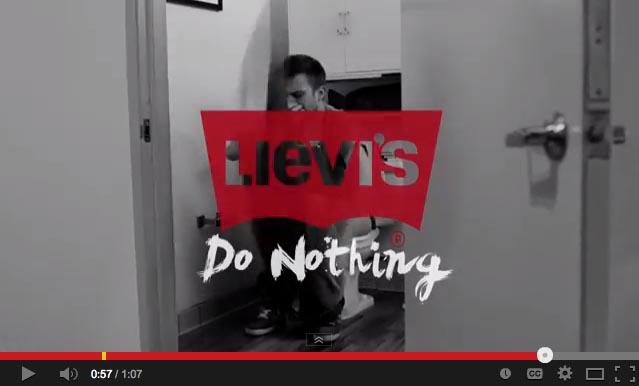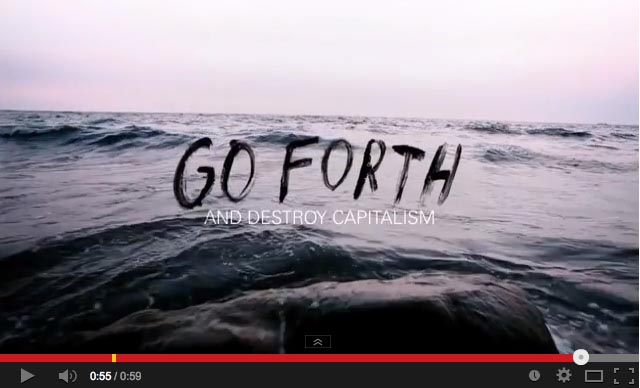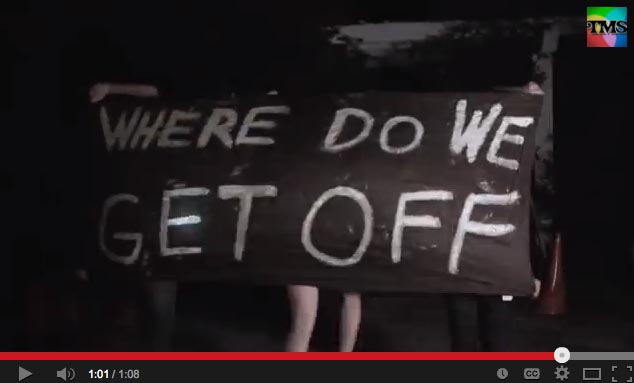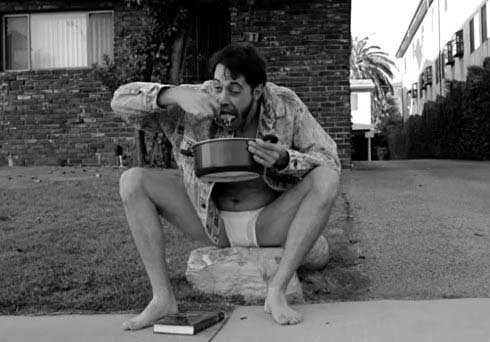 |
 |
 |
 |
 |
 |
"Marketers implore us to go forth seek out the light... As long as we do it in *their* jeans. But the fact of the matter is that these are the self-same scoundrels that are clubbing our lives into dank submission. Our every creative outlet, our every joy, they will rip from our hands.Go forth?! Go forth indeed. Go forth and loot their jeans. Go forth and revolt!" ("Go Forth and Revolt").
| These parodies demonstrate the contradictions in the Go Forth campaign. The advertisements make truth claims about freedom, individuality, and the destruction of capitalism which stand in opposition to their capitalist, money-grubbing objectives. These contradictions are parallel to those present in another famous commercial, "1984" for Macintosh Computers. In this commercial, Apple tells the audience that a Macintosh computer "has enormous political and social implications--for it has the power to save us from ending up like the prisoners, victims of a totalitarian state" (Berger 150). This is similar to the ultimate claim of the Go Forth commercial--if you don't buy these jeans, you will not be an individual, and you will not be part of the revolution of freedom. |  |
"it is possible for a viewer perfectly to understand both the literal and the connotative inflection given by a discourse but to decode the message in a globally contrary way. He/she detotalizes the message in the preferred code in order to retotalize the message within some alternative framework of reference" (Hall 175).In other words, to have an oppositional reading, one must first understand the preferred code. A preferred reading of the Go Forth campaign is presented in a 2011 Senior Project by Christina Baker at California Polytechnic State University, San Luis Obispo. She performs a semiotic analysis which concludes that the campaign is revolutionary and effective. She completely buys into the idea that the campaign proposes about the pioneering spirit of young people. In fact, she concludes her work with, "[N]othing can break America's youth. Nothing can hold us back; go forth with the new plan" (Baker 20). Although her argument is based on an earlier Go Forth commercial, the only real difference in the truth claims of the two commercials is that "Go Forth 2011" focuses more on freedom instead of patriotism. With this understanding of a preferred meaning, the video discourse on Go Forth is even more interesting.
 |
Based on video responses, viewers take issue with the Go Forth commercials for several reasons. In "Go Forth and Revolt," the creators take issue because the advertisement repackages creativity and the human spirit for capitalist means. This discourse is created through the Marxist lens of the video editors. On the other hand, the "Bukowski Parody" is a shot by shot recreation of the Go Forth commercial "O Pioneers." In this parody, a different and more typical Charles Bukowski poem serves as the narration, which deeply contrasts with the original Walt Whitman narration of "O Pioneers." The parody ends with the Go Forth banner waving across the screen, but instead of saying "Go Forth," the banner says "Where Do We Get Off." Interestingly, this parody has nearly half as many views as the original commercial and was uploaded two years after the original. However, it is not surprising, since parodies often get more views than the original (Hill 147). |
"Instead of empowering the youth, our spot encourages them to be themselves, even if that means just becoming a lazy bum of a couch potato who, in essence, does nothing. After all, how often did Nelson Mandela put on a pair of Levi's jeans and say, 'yep, today will be the day I'll end Apartheid!'?" ("Levi's Go Forth Parody: Do Nothing").In essence, this parody conveys the preferred meaning of the campaign better than the original commercial. It shows what actually being an individual and not caring about what other people think looks like. If we, as humans and as millennials, were all empowered to be ourselves, we would probably all sit around watching TV and drinking beer in our underwear.

After 2011, Levi's modified its Go Forth campaign to a more traditional style. The message of Go Forth was still present, but the advertisements utilized sexuality and a hard sell more often than revolution. The videos "#Go Forth" and "Perfect. We Are Not The Same" evidence this change. Go Forth 2.0 continued to use the value of individualism and authenticity as one of its main strategies. As Williamson wrote,
"Advertisements (ideologies) can incorporate anything, even re-absorb criticism of themselves, because they refer to it, devoid of content. The whole system of advertising is a great recuperator: it will work on any material at all, it will bounce back uninjured from both advertising restriction laws and criticisms of its basic function (such as this one) precisely because of the way it works in hollowing historical meaning from structure..." (Williamson 167).Interestingly, after a "rolling of eyes on a mass scale" because of the inauthenticity of these commercials, Levi's came up with a new strategy for its Go Forth campaign, featuring real residents of Braddock, Pennsylvania as characters (Newton). Ostensibly, this casting is designed to better demonstrate the authenticity of Levi's as a symbol of America, but it also demonstrates Williamson's concept of advertising's neverending ability to reabsorb and sell culture. Regardless of the contradictions and controversy surrounding the Go Forth campaign, it survives today as one of the most powerful and interesting discourses out there, on both the side of the preferred reading and the oppositional reading. Go Forth continues to swallow its criticisms and create advertising with a message of individualism.
In conclusion, Go Forth is an example of the lifecycle of modern advertising. In this semiotic and psychoanalytical analysis, truth claims about freedom, individualism, patriotism, and authenticity were uncovered. These claims were used to sell an inherently contradictory product. In fact, Levi's are not even made in America, they are made in Vietnam. It is also blatantly contradictory to sell a product for profit using messages of anti-capitalism. This oppositional nature has created a discourse in participatory media composed of oppositional readings of Go Forth commercials. Levi's ultimately incorporated these negative discourses and changed their strategy in the Go Forth campaign. While certainly controversial, the Go Forth campaign can be said to be effective advertising because it created so much external discourse about the brand.
1984. Youtube. Machintosh, Inc, n.d. Web. 7 May 2014. Link
Baker, Christina N. Levi's Go Forth Campaign: A Semiotic Analysis of "America". CalPoly.edu. California Polytechnic State University, San Luis Obispo, June 2011. Web. 19 Apr. 2014. Link
Berger, Arthur A. Ads, Fads, and Consumer Culture: Advertising's Impact on American Character and Society. Lanham, Md: Rowman & Littlefield Pub, 2004. Print.
Go Forth and Revolt. Go4thRevolt, 17 Aug. 2011. Web. 20 Apr. 2014. Link
Levi's "Go Forth" Bukowski Ad Parody. The Midnight Show, 15 Mar. 2010. Web. 20 Apr. 2014. Link
Levi's Go Forth Parody: Do Nothing. The Parody Patrol, 25 July 2013. Web. 20 Apr. 2014. Link
Newton, Matthew. "Levi's Attempts to Salvage 'Go Forth' Campaign With Sincerity." Annals of Americus RSS. True/Slant, 24 June 2010. Web. 20 Apr. 2014. Link
Williamson, Judith. Decoding Advertisements: Ideology and Meaning in Advertising. New York: Boyars, 1984. Print.